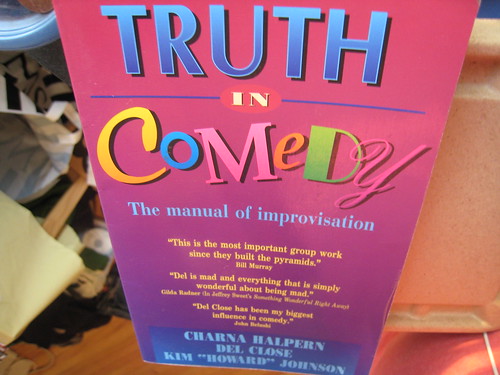Sometimes I feel compelled to try to better explain what long form improv is in this blog. Or how it works. Or what it's like. But it would probably just start to sound boring and technical, and even then, it's hard to get a sense of it without seeing it.
I remember being in grad school and my sketch group, Comedy Corner, tried to figure out how to do a Harold ('the signature form of the Improv Olympic theater") by reading iO's offiical book, 'Truth in Comedy.'
Here's how the book explains performing a Harold. "Teams begin by asking for a suggestion form the audience. They then personalize the suggestion and develop an attitude, which is expressed through the opening game (which can take many different forms). After the opening, the players begin the first round by improvising scenes (three seems to be the standard number). These are followed by a game, and then the scenes return for further development. Another game follows, and the scenes are brought back for a third time, though not all scenes will return. The Harold can end with any one of the scenes, or with another game."
The book goes into more detail, but I remember being in Arizona, reading these passages, knowing there was something there, but also feeling like I wasn't entirely getting it. "Games? What kind of games? So, we do a couple scenes and then start a game of Party Quirks?" As confused as it made me, it also got me excited. "I think this is what I'm looking for."
And it's hard to beat that title. 'Truth in Comedy.' Even with the cringe-inducingly wacky comedy font that title is great.
Friday, May 9, 2008
Subscribe to:
Post Comments (Atom)


No comments:
Post a Comment